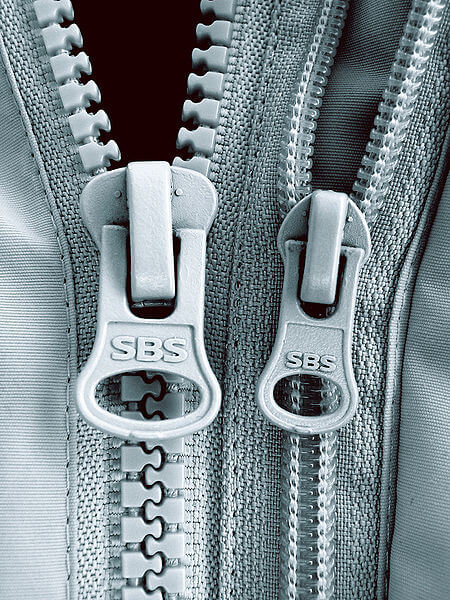An engineer who managed to solve the problems and invented the method of the teeth entering the opposite niches

Otto Frederick Gideon Sandback (24/4/1880-21/6/1954) Swedish-American electrical engineer known as the inventor of the zipper.
Sandback was born on a farm in the area of Odestogo Parish, in the county of Jönköping in Smaland, Sweden. He was the son of Jonas Otto Magnuson Sundback, a rich farmer, and Christina Carolina Kelsdotter. After studying in Sweden, he moved to Germany, where he graduated from the Polytechnic School in Bingen am Rhein. In 1903, he passed the national engineering exams. In 1905 he immigrated to the USA.
Upon his arrival he began working for the Westinghouse Electric Company in Pittsburgh, Pennsylvania. In 1906 he was hired to work for the Universal Fastener Company in Hoboken, New Jersey. In 1909 he married Elvira Aronson, daughter of the factory manager, born in Sweden, Peter Aronson. Eventually he was promoted to the position of chief planner at Universal Prestner.
Sandbeck developed the zipper between 1906 and 1914 when he worked for a company that later became Talon. He relied on the work of other engineers such as Elias Hewa, Max Wolff Whitcomb Judson. He was responsible for improving the Judson C-curity Fastener. At that time the product was based on hooks and 'eyes'. Sandbeck developed an improved version of the C-curity which he called Plako, but it too had a strong tendency to disintegrate and was no more successful than the previous versions.
Sandbeck finally solved the separation problem in 1913, by inventing the first version not based on the hook and eye principle. The bracket is hookless number 1. It increased the number of bracket elements from four per inch to 10-11. When it was invented, the product had two rows of teeth that crossed each other and stretched into one piece using a slider.
In 1914, Sandback developed a version based on teeth that close against each other - hookless fastener No. 2. This version was already similar to a modern metal zipper that already contained all the components. In this bracket, each tooth contains a dimple at the bottom and a point or cone at the top. The tip of one tooth is designed to fit into the socket at the bottom of the following tooth on the other side, with the two tooth bands connected by two channels in the shape of the letter Y through the slider.
The teeth are connected by means of a strap to the edge of the garment, with the teeth on one side opposing at half the height to those on the opposite strap, they are so tight that it is difficult to separate them. One tooth cannot pop out of the socket below it enough to come free, and the tip above cannot slide out of the socket in the tooth above it. The patent was issued in 1917.
The name "zipper" was created in 1923 by B.K. Goodrich who used the device in new boots. Initially boots and tobacco pouches were the primary uses for the zippers. It took another 20 years before the fashion industry started using the invention. By the beginning of World War II, zippers had become accepted and were used to close pants and the back of dresses.
Sandbeck also developed the production machinery for zippers. The Lightning Fastener Company from Canada was one of the first in the world to produce zippers. He remained until the end of his life in the United States, but gained world fame. The Swedish Academy of Engineering Sciences awarded him a gold medal for his invention in 1951, three years before he died of a heart attack. Many years later, in 2006 he was posthumously honored when he was inducted into the US National Inventors Hall of Fame.

14 תגובות
An interesting invention but a lot to read
Thanks for the link to the demo animation! Now the principle is much clearer to me. What is strange is that it is very difficult (if at all) to perform the same operation manually with the hands, as if the piece of metal that passes between the two parts works magic 😉
http://upload.wikimedia.org/wikipedia/commons/f/f0/Zipper_animated.gif
The best inventions, at their core, are very simple.
the truth? To this day, I have not been able to understand how people do not associate a zipper with induction proof.
The truth is that to this day I cannot understand how this amazing patent works, and how this small piece of metal that passes between the two parts manages to connect and separate them so easily as it cannot be done manually.
Really genius.
The inventions that amaze me every time are the ones where I say "so simple, how did I not think of that"
When you think about these inventions, you realize that this is the real genius - billions of people could have thought of this, because it is so simple, but only one did.
And our gentlemen have already slept
"The reach, the reach, the reach, the reach is opened
And we will see different worlds"
Very interesting and waiting, thank you very much!
I admit that I came because of the special Google home page for the 132nd anniversary of his birth.
In general, they write Ritz-Retz
Thanks. fixed
One more small correction - "the zipper", line 2, and not "the zipper". In a small way, not in a small way...
Thank you Malachi. fixed. happy holiday to you too.
An interesting article, but you forgot to spell it out: he didn't study at "Shbadashdia"!
happy Independence Day.
exciting. Inventions of this kind that make our world much more comfortable.
But: boots are new (and not new)! in the penultimate paragraph